Epigenetic and non-coding RNAs
1/16
There's no tags or description
Looks like no tags are added yet.
Name | Mastery | Learn | Test | Matching | Spaced |
|---|
No study sessions yet.
17 Terms
What are CpG islands
surround housekeeping genes (need to be kept on all the time – important) that code for proteins that keep cells viable
Helps maintain cellular specialization
CpG methylation is important for efficient gene repression to be passed onto daughter cells
Surround the promoter
20,000 of CpGs mark the 5’ end of transcription units (typically around the promoter)
This ratio probably reflects a balance between methylated CG loss by DNA repair and CG gain by random mutation. The CG sequences that remain are very unevenly distributed in the genome; they are present at 10 times their average density in selected regions
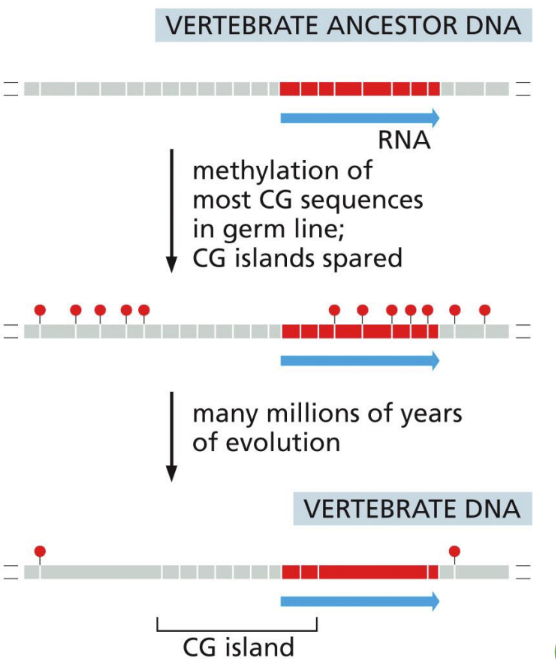
Epigenetic inheritance
heritable changes in phenotype (appearance) or gene expression caused by mechanisms other than changes in the underlying DNA sequence
Epi = in addition to => environmental
Can be affected by the environment
Ex: Lactose tolerance
LPH metabolizes lactose (encoded by the LCT gene on chr. 2)
LCT expression regulated by polymorphism in upstream gene MCM6 (if polymorphism is missing, then lactose intolerance happens)
LPH is high in European populations and lower in African populations => likely because they need more vitamin D than Africans
cis and trans epigenetic mechanisms
What are cis-epigenetic mechanisms
within the same DNA strand/molecule
DNA methylation
Histone modification
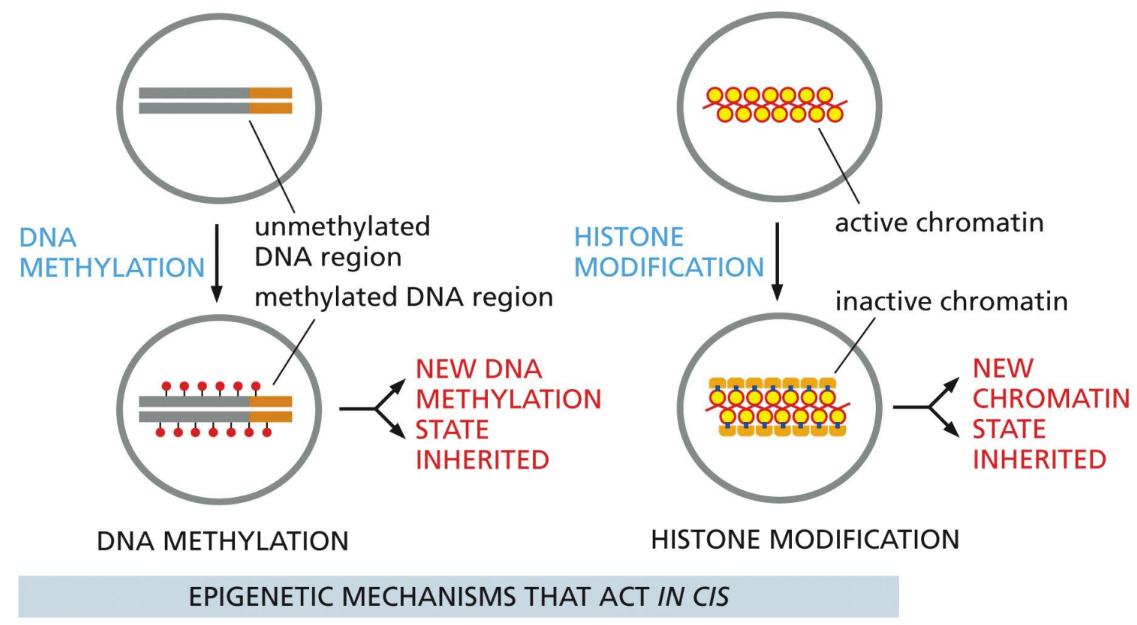
What are trans epigenetic mechanisms
something outside the sequence that’s affecting the gene
Positive feedback loop activated
Conformation change to aggregated state
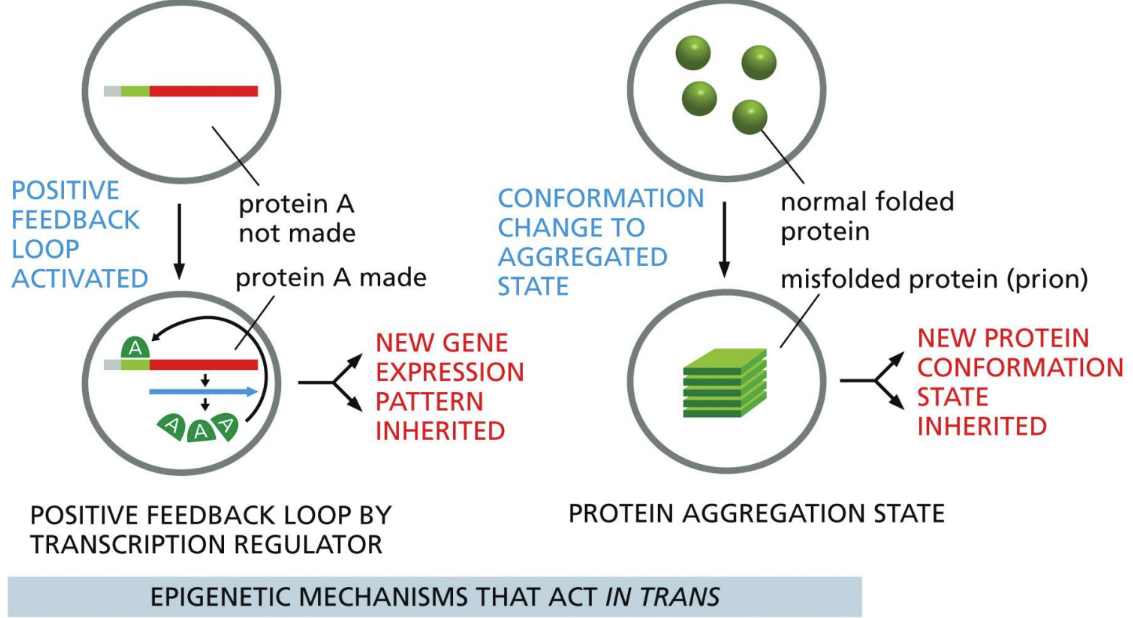
What is imprinting
= silencing
A small minority of genes are expressed if inherited from mother, some expressed if inherited from father
Imprinting genes = one gene is silenced by methylation and cannot be transcribed
Normal inheritance = 2 working copies of a gene (one from each parent)
Imprinting DOESN’T cause a disease, the other remaining gene does
Disease: Prader-Willi & Angelman syndrome (imprinting of gene in chr. 15 & a deletion)
What is RNA interference (RNAi)
Short single-stranded non-coding RNAs of 20-30 nucleotides that guide or interact with other RNAs in the cell
Can inhibit translation of mRNA by catalyzing its destruction
Can mess with RNA and template during transcription and form repressive chromatin on the DNA
Proteins involved in RNAi are also involved in breaking apart dsRNA to form 23 nucleotide long siRNA
3 types (miRNA, siRNA, piwiRNA)
What are non-coding RNAs
lncRNAs = act as scaffold molecules (hold proteins together – after splicing)
Longer than 200 nucleotides
Ex: Telomerase RNA, Xist RNA, silencing RNA, gene regulators
What is CRISPR
Viral DNA fragments are incorporated into bacterial genome, acting as a vaccine to make small noncoding RNAs (crRNA)
crRNAs destroy the virus if it reinfects the bacteria
Now using miRNA/siRNA (these are the Cas proteins that will interact with crRNA)
Cas proteins need a PAM sequence to recognize bacteria’s genome and cleave in the right place
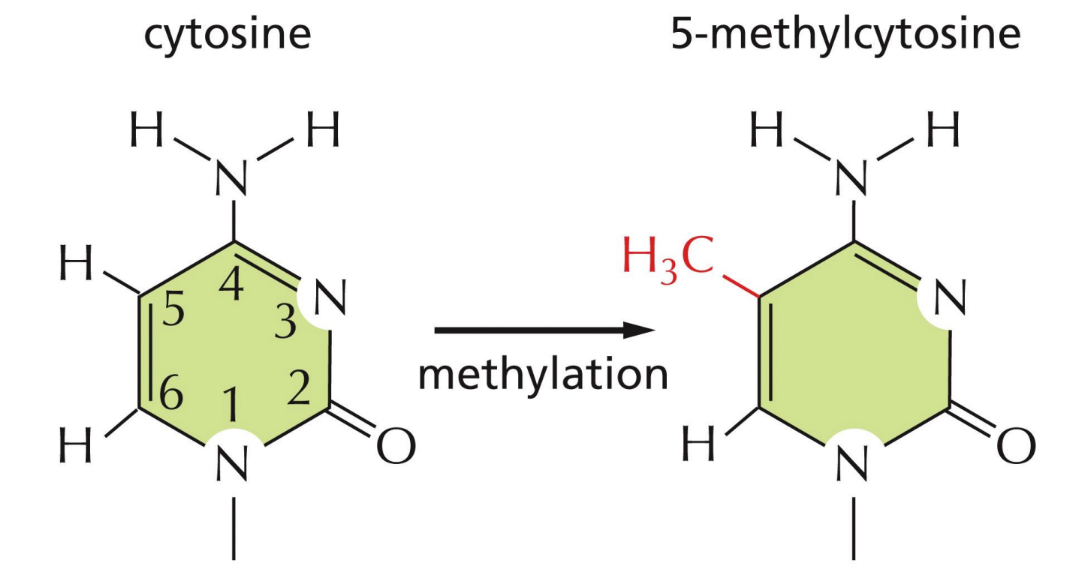
What does DNA methylation do
Methylation = methylating Cytosine
marks genes that are “imprinted”
Requires a methyl transferase to pass along the methylation to correct daughter cells
Regulate gene expression (without changing DNA sequence)
Methylation of CpG sequences is important in efficient gene repression that can be passed on to daughter cells
Helps maintain cellular specialization
Occurs right after DNA replication (inherited)
Methyl transferase recognizes methylated C at CpG and adds it to new daughter strand
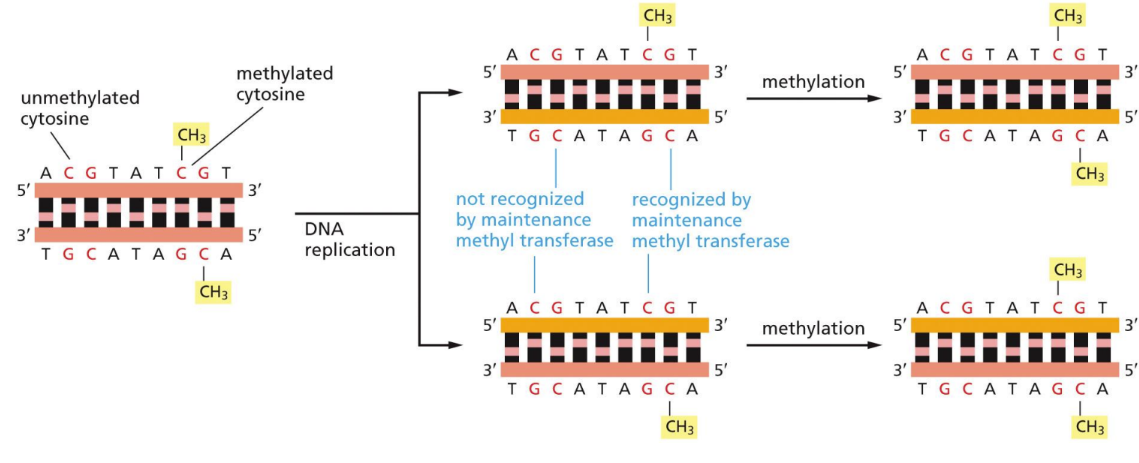
What is deamination
Deficient in mammals because the methylated cytosine mutate into a T over time (via accidental deamination)
The remainder, C, are present in CpG islands in selected regions of the genome
What are the 3 classes of RNAi
miRNA, siRNA, piRNA
What is micro RNA (miRNA)
Regulate some of human protein-coding genes by forming base pairs (complementary bp usually 7bp long in 3’ UTR of mRNA) with certain mRNAs & fine tune translation
Shut down method
Small but mighty
Regulate gene expression by repressing translation via mRNA degradation
miRNA calls other gene regulators to further reduce translation (mRNA of interest MUST have short common sequence in their 3’ UTR)
Made by RNA pol. II with a cap and poly-A tail. Proteins (Argonaute) are then added to form RISC (RNA-induced silencing complex)
RISC = proteins + miRNA complex
Involved in heterochromatin formation using methylated histones
What are small interfering RNA (siRNA)
Look for viral or transposable RNA element (transcriptional repressor) (defense mechanism?)
Self-replicating: RNA pols use siRNA as primer to make more precursor siRNAs
Broken apart and destroyed by RITS
Considered to be an ancient form of RNA interference
What are Piwi-interacting RNA (piRNA)
bind to piwi proteins and protect the germ line from transposable elements
Explain viral protection in relation to CRISPR
bacteria use non-coding RNA to destroy the DNA of invading viruses (via CRISPR)
Viral DNA fragments are incorporated into bacterial genome, acting as a vaccine to make small noncoding RNAs (crRNA)
crRNAs destroy the virus if it reinfects the bacteria
Now using miRNA/siRNA (these are the Cas proteins that will interact with crRNA)
Cas proteins need a PAM sequence to recognize bacteria’s genome and cleave in the right place
CRISPR is now used in plants and animals to manipulate genomes
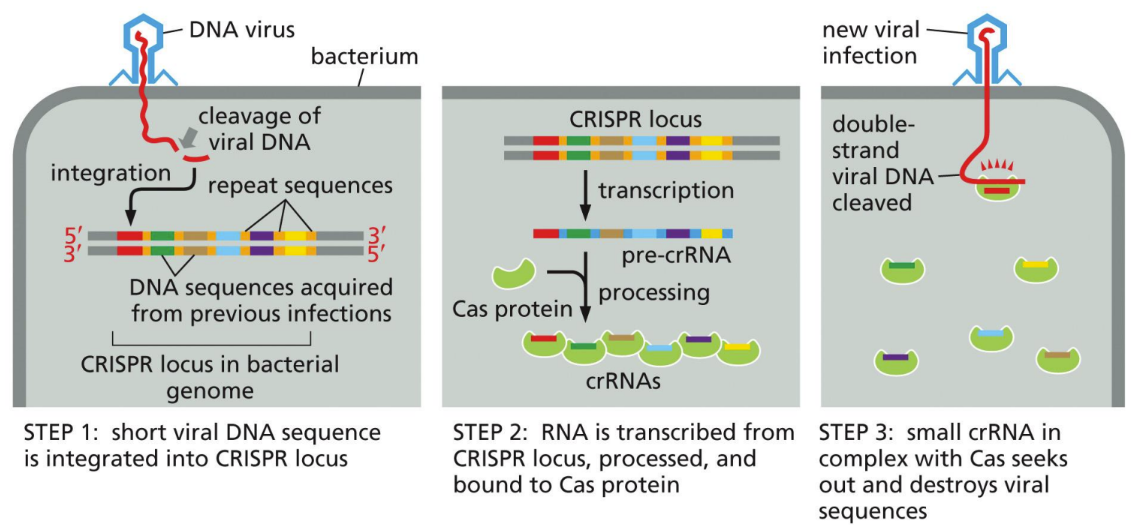
What is Prader-Willi syndrome
aused by deletions of genetic region that includes small nuclear ribonucleoprotein polypeptide N gene
Maternal copy of gene is silenced (imprinted)
Paternal gene is deleted
Increased appetite (over-weight)
What is Angelman syndrome
Caused by a loss of expression of a single maternally expressed gene in the same region: UBE3A
UBE3A encodes for E3 ubiquitin ligase protein (involved in targeting proteins for degradation & is only imprinted in the brain)
Loss of UBE3A = abnormalities in normal protein degradation during brain development
The paternal gene imprinted
Maternal is loss
“smiling” all the time